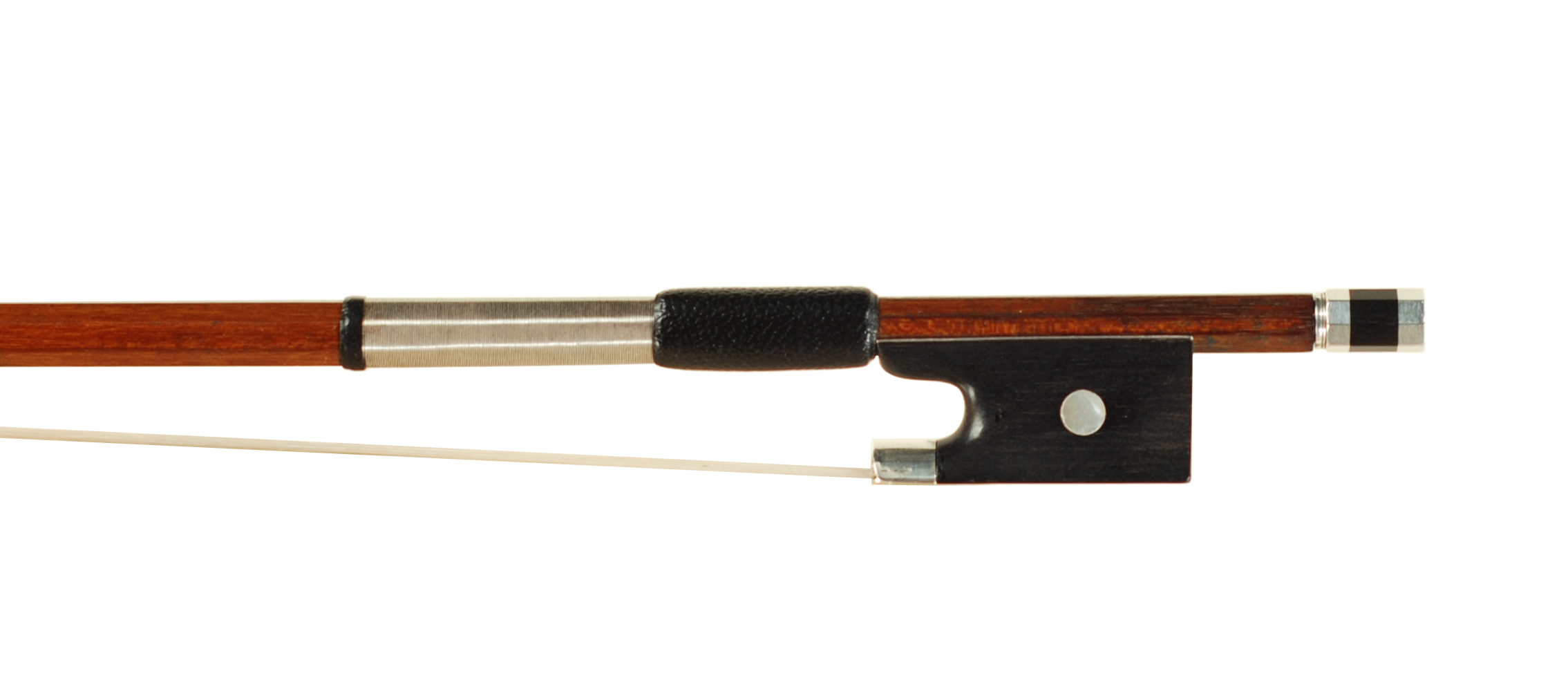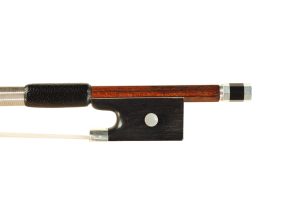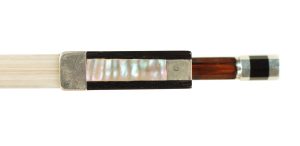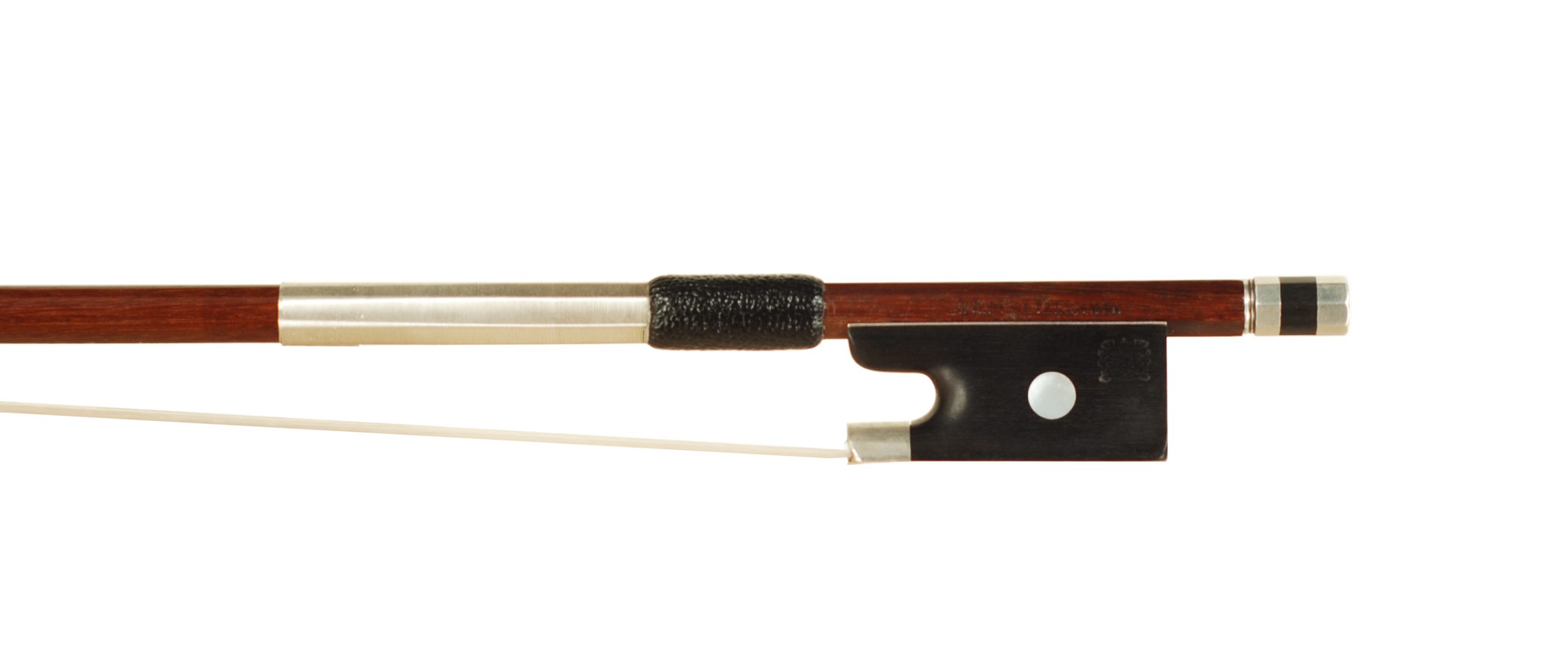Non-Stamped Silver Mounted Pernambuco Violin Bow – Klingenthal/Saxony circa 1900-1920 -CURRENTLY OUT ON TRIAL-
$1,300.00

Germany produced an amazing number of instrument and bows from immigrant families who came from the outer rim region of the Czech Republic bordering Germany. They were known as the German speaking people of Bohemia. They came and crossed into the Saxony region of Germany to escape religious persecution, economic hardships, and the many wars that were happening. They started coming into Germany as early as the 11th century into the northern region called Saxony, in and around and just north of the town of Markneukirchen. They brought with them their culture along with fine woodworking skills. They were meticulous in their woodworking skills, and they saw the economic advantage of putting their skills to use into the growing need for musical instruments during the 18th and 19th centuries. The Bohemian immigrants also made, lutes, the famous cuckoo clocks, recorders, harmonicas, accordions, and other folk instruments.
Others focused on supplying the wood and procuring gut for strings, the pernambuco for bows from Brazil, and the ebony for pegs and fingerboards from Africa and India. These hard-working very creative people became fully aware that the string instrument world was calling for more instruments and higher quality bows. In the mid 1800’s guilds were formed to help raise quality and provide standards. Families devoted themselves to the making of either the instrument or the bows for those instruments. Many of the bows made in family workshops had no name placed on the bow and or country of origin. This is one of those bows. The makers did not seek recognition or stamp where the bow was made. The makers simply made bows for other local instrument makers to be placed with a violin outfit. This was not an uncommon practice in the late 1800’s and in the early 20th century.
Our bow is above the norm for a stick that lacks origin and the maker’s name. This is a sterling silver mounted bow where the bow maker would have carved and created at this higher level because he thought the wood chosen was much better than any bread & butter bow. The stick’s orange/brown color is beautiful and is a slightly darker color at the playing end above the frog. This bow was played and taken care of. It is in octagonal section and made from the much sought after pernambuco wood. The head of the bow is strong and stands pretty much straight up from the opening nose. The camber starts quickly after the head and then remains gradual until the middle of the bow where it starts to return. The frog has single mother-of-pearl eyes and the eyes, and the slide have some slight colorful hues. The slide is slightly tapered- a sign of older handmade bow work. Thinner at the heel and wider at the ferrule. The heel is one piece sterling silver and resembles work of Klingenthal/Markneukirchen makers; it could even be a Bausch bow. The bow is sterling silver mounted which gives the bow great balance with the weight falling towards the frog end. The heel is pinned, and the lining is held to the frog by two small silver screws. I have meticulously gone over the bow and gave the tip a new facial in tip armor and a new silver winding with leathers to capture the north and south end of the silver. The abalone eyes in the frog and in the silver three-piece end button have been replaced because they were sunken and or cracked. The button also has some nice lathe work on the double turn of the collar. The bow is in very good condition and ready to get matched to another violin. If we knew the exact makers name and could pinpoint it down to a family of makers the bow would easily be twice the price.
Weight fully haired 62.1 grams










